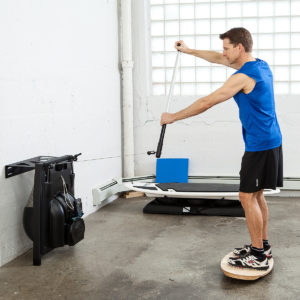Effective and sustainable teambuilding is necessary in today’s marketplace where fewer people are being required to do more work. More often than not, the adage “Getting everyone rowing in the same direction” is associated with building effective teams. However, is this really true? If everyone is rowing in the same direction, will the organization or the individual project realize a dramatic return for everyone’s results?
For example, a recent trip to a large international law firm allowed me the opportunity to read an electronic sign with a picture of a boat and 8 oarsmen all rowing together. I reflected upon this picture as I talked with the HR director who was sharing with me management’s philosophy. After he finished, I asked him this question: “If I were to survey 10 of your employees or 10% of the approximately 100 employees at this location and ask them to name the top 3 goals of the organization for the current year, would I walk away with 3 goals, 30 goals or 100 goals or more?” He responded that he would like to say 3 because of all the ongoing work that has been done and is being done to communicate the goals, but he believed that I would receive more than 30. His answer demonstrates that effective team building goes beyond communicating the message, but must be internalized by each team member. My next question was simply what is all of these “missed strokes” costing the organization?
Returning to the visualization of the boat being rowed by everyone towards the same point on the horizon, we presume that everyone is using the same oar where the paddle is hidden just below the water line. Yet, if all rowers would lift their oars, we might see that some of the paddles have different lengths, shapes and sizes. Some paddles may even have holes in them. These paddles have changed because the rowers have internalized communications differently and their subsequent actions or behaviors are based upon this internalization.
Effective teamwork goes beyond knowing the overall team’s direction. Constant monitoring of the “paddles” is necessary to ensure that during the “rowing process” the paddles have not changed and are still delivering the most efficient and effective results.
 Paddle Weekend Your Paddle Weekend
Paddle Weekend Your Paddle Weekend
